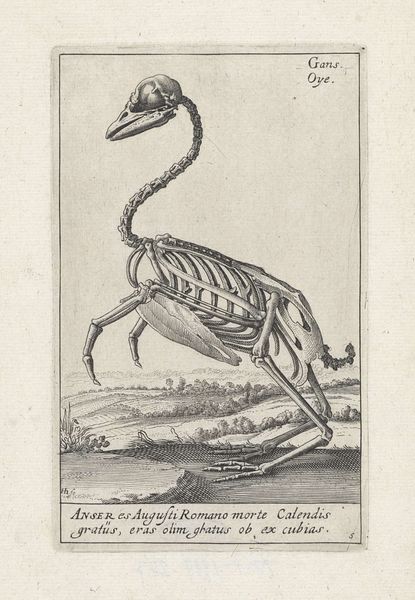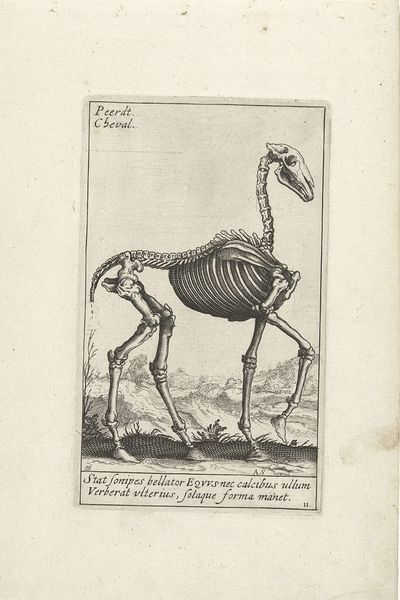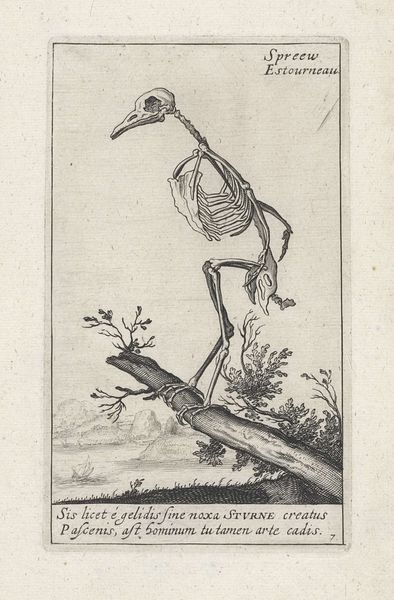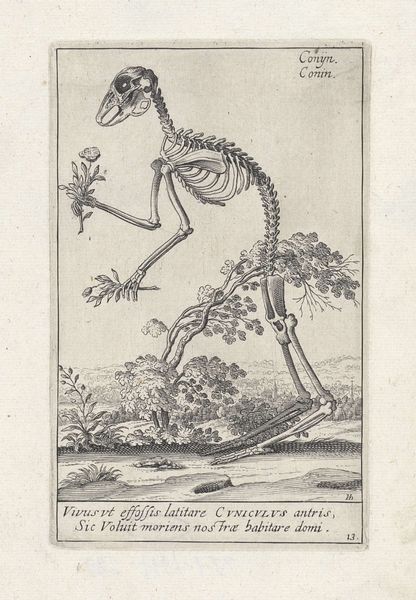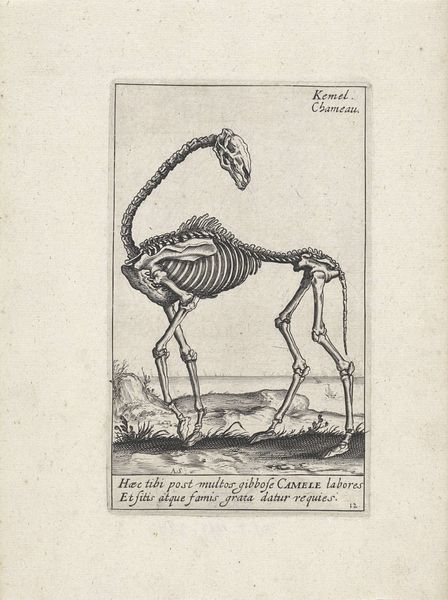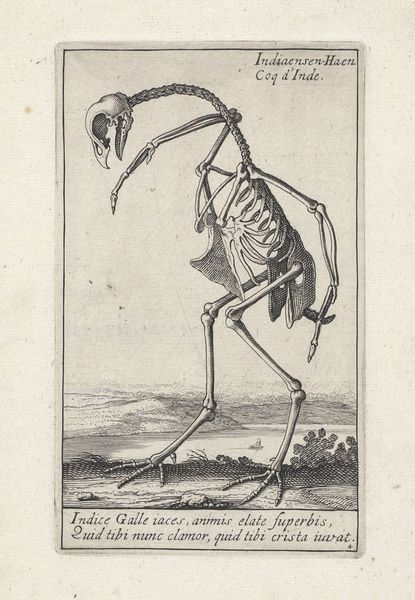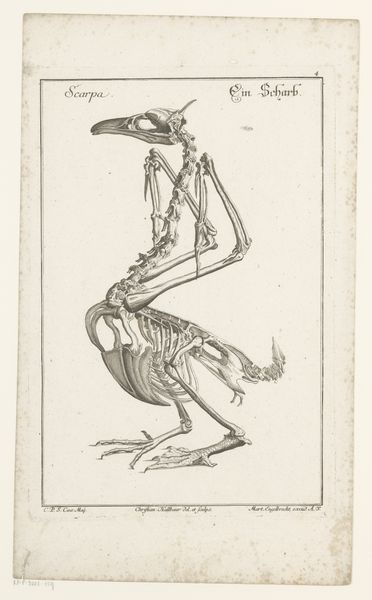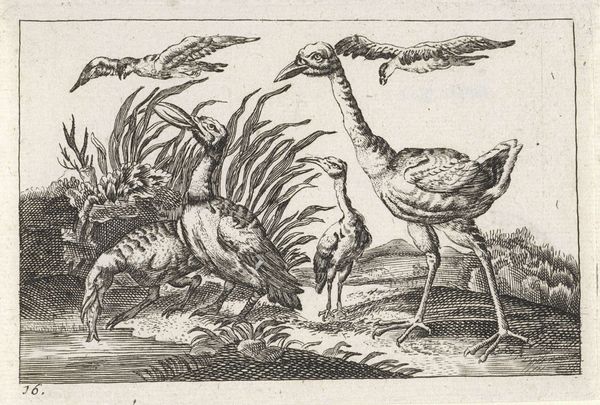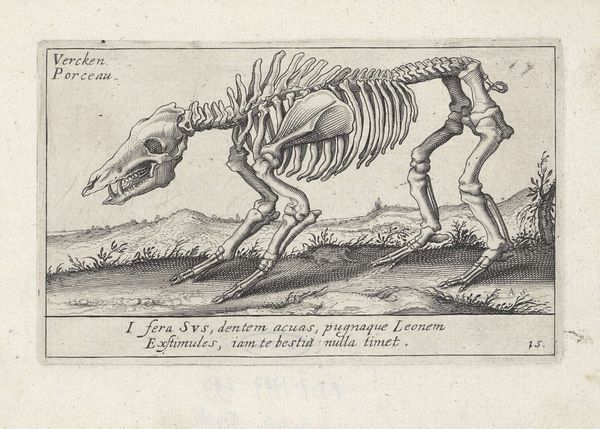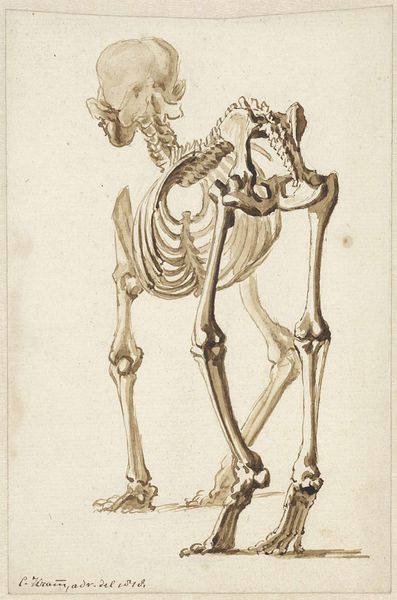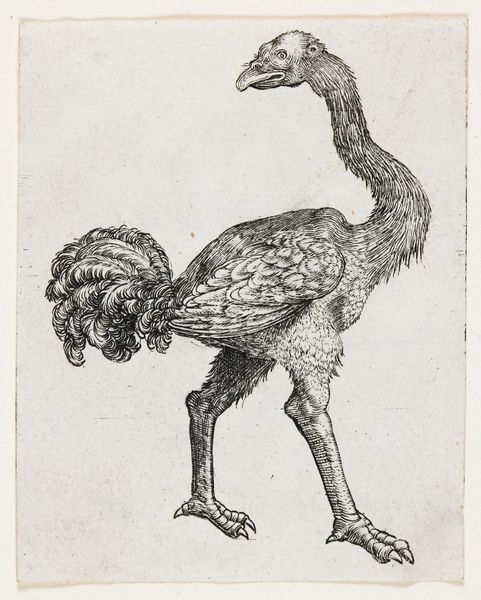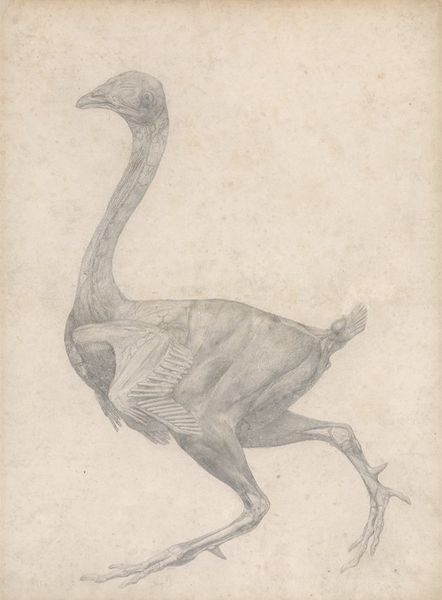
drawing, print, etching
#
drawing
# print
#
etching
#
history-painting
#
academic-art
#
naturalism
Dimensions: height 155 mm, width 96 mm
Copyright: Rijks Museum: Open Domain
Curator: This piece, titled "Skelet van een kraai" or "Skeleton of a Crow," was created between 1625 and 1626 by Hendrick Hondius I. It's currently housed here at the Rijksmuseum, and is a work rendered in etching—drawing, print, a real blend. It immediately brings to mind the complex relationship between scientific study and artistic representation of that era. Editor: It's hauntingly beautiful, actually. The stark contrast of the lines, the isolation of the skeleton against that spare background...there's a definite mood of melancholy. Curator: The level of detail is extraordinary, isn't it? You can practically feel the texture of the paper itself. Hondius I obviously had a deep understanding of anatomy but also the intricacies of etching. It also reminds us about material scarcity and ways to represent something important using limited means. Editor: And that text! I see it as part of a longer historical arc wherein printed knowledge became widely accessible and disrupted societal structures across Europe. To me, it contextualizes not just artmaking, but intellectual life as a whole—its circulation, access, the power dynamics embedded within systems of production, ownership, and access. Curator: Right, the medium informs the message—an act of scientific inquiry being presented for a possibly broad audience. And also consider the materiality itself: acid, copper, ink and paper. These weren't mere materials but the building blocks of enlightenment. We tend to overlook the social position and labor required of tradesmen to make this work possible, right? Editor: It speaks to larger sociopolitical questions, doesn't it? A lot has shifted during this period, including the transition in European countries toward societies rooted more and more deeply in capital. We could talk for days. Curator: It really is fascinating. Hondius transformed scientific observation into something deeply affecting, which is evident across his whole portfolio. Thanks for discussing the context, it helped me appreciate his work further! Editor: Always a pleasure! It highlights for me how intertwined seemingly disparate fields—science and art—can be during moments of rapid social, material, and political shifts. I am curious what a contemporary print-maker would make of the circumstances and challenges here?
Comments
No comments
Be the first to comment and join the conversation on the ultimate creative platform.
